Home | About CCW | Contact Us | Climate change Meaning | Causes | Solutions | Emissions | Carbon trading
Species loss
Species loss is a natural and inevitable consequence of climate change.
One way to describe why species are lost is to imagine a world without climate change, a world where the climate is stable and the weather predictable.
Let’s say it rains regularly and well, maybe 1500 mm each year. It warms nicely most days with a cool day still a generous 20°C in the shade and there are no frosts. Storms come along to shake things up on occasion but they are not strong enough to destroy habitats.
Also imagine that these tropical conditions have persisted for tens of thousands, even millions of years.
This is what the habitat would look like.
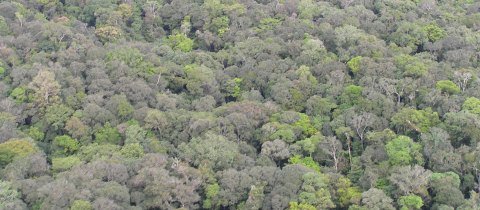
This forest will be crammed with biodiversity, thousands of species of plants and animals, many more types than you could easily count. Indeed, there are no tropical forests on earth where we actually know how many species are present. Even the professionals struggle to describe the all the insects and microbes that live in them.
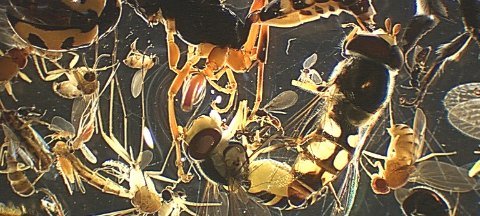
This richness develops because mutation, genetic drift and chance result in variation among organisms who then mix, match and specialize into ever narrower parts of the resource and physical space. Over time, competition between types filters out those best suited to cope. Symbioses, synergies, mutualisms and parasitisms develop in profusion (along with the jargon).
Soon the flea has fleas on its back.
This profusion of diversity happens because stable conditions create continuity in key parameters, particularly
- the volume and rate of primary production
- disturbance with a predictable frequency and intensity
As consequence resources are shared (partitioned) based on rules of competition into smaller and smaller parcels. Slowly but steadily, more species are packed into the available physical and resource space. There is some species loss as not all successfully compete but generally there is an increase in diversity.
Eventually an equilibrium of sorts develops, where the species become tightly packed into what the ecologist call niches.
In these stable times, species are lost in a steady, somewhat regular pattern. Something like this happens:
An epiphyte (a plant that grows on another plant) mutates so its seeds produce plants in the next generation with flowers that are yellow not white.
A wasp species that has a tendency to visit yellow flowers and is good at spreading pollen; visits the yellow flowers and spreads the gene for yellow flowers. In time epiphytes with yellow flowers become quite common. Wasps that naturally tend to visit yellow flowers more often do well because they obtain a more reliable nectar source.
After many generations of the epiphyte species being pollinated by the wasp species a mutualism develops. The epiphyte needs the wasp and the wasp needs nectar from the epiphyte flowers.
This works well so long as the there are flowers.
What we didn’t mention is that the epiphyte is a parasite on a certain tree species. And this tree needs wet soil to grow and its seedlings need very wet soil for at least a year while they grow an efficient root system.
It only takes a dry spell, a slight shift in the climate, and the next generation of the tree fails.
Without the tree the epiphyte with the yellow flowers dies out taking the wasp (together with its unique set of parasites and microbes) with it.
A slight shift and there is species loss.
When climate changes, there is nothing we can do about this kind of species loss. No amount of reserves, habitat corridors or species recovery plans will help the wasp, its parasites and the microbes – even if we propogate the tree and its epiphyte with yellow flowers and plant many thousands of them in suburban gardens.
Species loss is inevitable because climate change disturbs the system – it brings a set of conditions that species in tight, narrow niches cannot handle.
Sometimes there is extreme climate change and many species are lost.
Extended drought or more intense and frequent severe weather (hurricanes, floods) can be catastrophic. The loss of the dinosaurs was probably due to a large meteorite strike that generated enough dust to darken the skies and cool the climate.
Losses are lamented because we perceive loss as a bad thing (no doubt related to our own mortality).
Certainly there are consequences of species loss for ecosystems. Lose too many species and the integrity of the ecosystem processes are compromised. Nutrients fail to cycle, water is less balanced, disease and pests have no checks on their spread and we see cascades of change. Not good if we want an ecosystem to deliver food, clean water and amenity value.
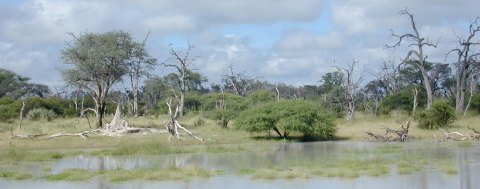
Yet disturbance and species loss is actually the pattern in evolution. And it is natural.
Indeed, the loss of species creates opportunity for new species to evolve to fill the gaps, species that may come from a different ancestry to those that were lost. Overall collective diversity increases following the extinction hiatus.
Anthropogenic climate change – the kick to the climate from human economic activity – will also result in species loss. Many habitats will see reduced biodiversity and the concern is that these habitats will be less efficient as a result; less able to deliver services that humans use.
The crucial issue is that humans will not have the time to allow biodiversity to recover.
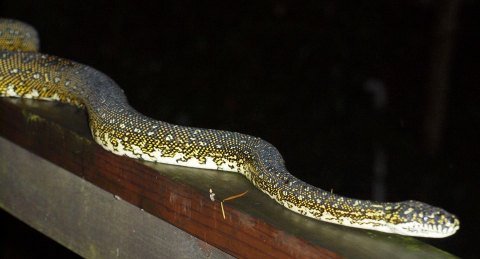
Back to top of Species loss | Return from Species loss to Climate change effects | Back to Climate-change-wisdom homepage
Recent Articles
-
Reducing emissions while looking for solutions...
Nov 01, 15 04:46 PM
I've seen a lot of post's online for ideas on reducing emissions. The one suggestion I have not seen, is the most obvious. There should be a government -
Climate change evidence
Mar 24, 15 06:22 AM
Real climate change evidence has to demonstrate a change in climate. An extra sunny day or a severe storm or a flood is not enough. -
The climate change effect
Feb 19, 15 03:08 AM
What will be the climate change effect? There isn't one, there are many. Perhaps too many for us to understand.

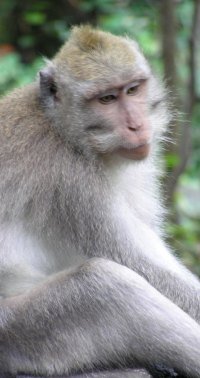
New! Comments
Have your say about what you just read! Leave me a comment in the box below.